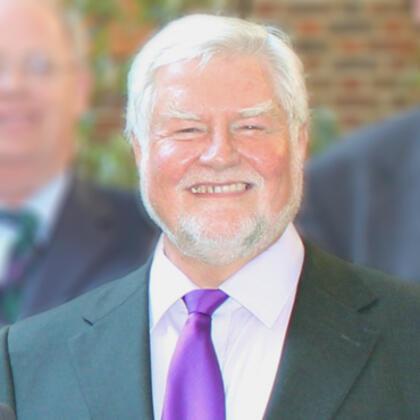The Psychology of Performing Arts: Theatre and human expression
Share
- Details
- Transcript
- Audio
- Downloads
- Extra Reading
What benefits do we derive from theatre (including film and TV)? It is excitement, vicarious experience, education, catharsis, or all of these things? Does our enjoyment depend upon the ability of the playwright to parade problems in a way that connects with our own? What do the archetypal themes emerging through great drama tell us about nature? Can we be harmed (e.g. depraved and corrupted) by theatre? If so, under what conditions?
Download Transcript
THE PSYCHOLOGY OF PERFORMING ARTS: THEATRE AND HUMAN EXPRESSION
Dr Glenn Wilson
Theatre is an arena in which we can mentally play, acting out our fears and fantasies in an experimental way. It excites new ideas and perspectives and provides us with rehearsal for life. In the broad sense, theatre can be taken as referring to films and TV as well as live theatre - indeed, any sort of entertainment that includes performers and audience (sometimes intertwined in complex ways) and which requires imagination to make it real.
Central to much of theatre is human conflict - the characters struggle to attain their ends against opposition, mostly from other characters. Role-playing puts us into the head of each character in turn, allowing us to see things from their viewpoint. By observing how they deal with their problems, sometimes adaptively, sometimes self-destructively, we learn lessons in how to choose among our own options.
An important function of theatre is stimulation. Theatre adds magic and thrills to our mundane lives - whether it be disturbing (tragedy & horror), ridiculous (comedy) or romantic (esp. musicals). Modern civilisation has become overly safe. From time to time we need to rock the boat and test the alarms - to try out novel, challenging experiences and sample danger, albeit within a safe context. Theatre and films give us a chance to rehearse reactions to rare, dreaded occurrences such as rape, earthquake, fire or death of a loved one, helping us to cope with such events should they occur in real life.
As a case study, consider the myth of Dracula - perhaps the most popular of all themes in the horror genre. The story derives from several fears that were widespread in 18th Century Europe. (1) The werewolf legend, concerning a half-human beast that beast that changes form in darkness. (2) Pacts with the devil, in which people were believed to have traded their souls for immortality. (3) Tales of bloodsucking bats that transmit rabies - the 'infection' idea. (4) Actual episodes of people coming back to life after misdiagnosis of death and hasty burial in shallow graves (theundead).
Count Dracula was partly modelled on Vlad the Impaler, son of a bloodthirsty Romanian ruler dubbed Dracul (dragon). He himself was called 'Dracula' (son of the dragon). Central to the story, especially as starring Christopher Lee in the Hammer film series, is the seduction metaphor. Tall, dark, taciturn stranger makes sudden appearance at the casement of a buxom maiden's bedroom in the dead of night. With dark, compelling eyes and supreme authority he penetrates a vulnerable part of her body, drawing blood and claiming her soulful devotion forever. This is Jane Austen plus the frisson of fear.
The experience of extreme fear is sometimes said to be cathartic.Catharsis (from a Greek term meaning purification) refers to the purging of pent-up emotions that is supposed to follow the viewing of tragedy. It is similar to the Freudian idea of abreaction - the theory that neurosis is relieved by bringing repressed childhood trauma to consciousness, using procedures such as hypnosis, free association and dream analysis.Psychodrama is a kind of group psychotherapy based on role-playing and dramatic improvisation around life situations relevant to clients' problems. The safe distance hypothesis states that catharsis occurs in the theatre when there is (1) sufficient identification with the characters and action that previously unresolved emotions are aroused, and (2) sufficient cues that the present situation is safe (the reassurance that 'it is only a play'). The idea that one benefits from a dilute dose of an original trauma is reminiscent both of homeopathy and the principle of inoculation.
The therapeutic value of catharsis is, however, a matter for debate. Research on debriefing therapy for post-traumatic stress disorder indicates that the simple reliving in imagination of a traumatic event is unhelpful - it may even make matters worse. What seems to be necessary is some kind of cognitive restructuring, a reframing of the original event as less threatening. The experience of theatre might provide this, if only to help put our own problems in perspective. Whatever our troubles they are unlikely to be as bad as those Othello or King Lear, so we alight from the theatre much as we awaken from a nightmare - relieved that it is not for real and recognising our plight as relatively trivial.
The theory of catharsis has been applied to the effects of media violence. The suggestion is that viewing violence should reduce the urge to act violently in real life. Most research, however, points to the conclusion that the viewing of violence increases the likelihood of real violence, throughimitation and desensitisation. This is especially true when the impliedmessage is that violence is a normal and acceptable way of resolving disputes. Of course there individual differences in susceptibility to the effects of media violence - not everybody is affected - but if only a small proportion of people are tilted toward atrocities, this would be cause for concern. Sex in themedia probably follows similar rules - messages regarding what is normal are received, which might include dangerous 'myths' (e.g., the belief that women will get around to enjoy being raped if only you get them started).
If exposure to horror and fear is cathartic in that anxiety is reduced, why would the same not apply to hostility? Why would media violence not lead to a decrease in real life violence? For one thing, violence is not always associated with anger - sometimes it is just a cold-blooded attempt to gain advantage. The robber who presents a sawn-off shotgun at the bank is not angry with the teller, he just wants the money. Thus there may not be any emotion to be 'purged'. What might be reduced by repeated exposure to violent images or sequences is fear of the consequences of actingviolently, both to oneself and others (this is what is calleddesensitisation). In a similar way, viewers may become desensitised to the possible negative consequences of sexual promiscuity or rape.
Some have questioned the strength of the association between media violence and violent behaviour, noting that the correlations, although significant, are usually quite low (around .2 or .3). A meta-analysis by Huesmann (2007) suggests that the effect size is comparable or greater than many other widely accepted threats to public health. In fact, it is second only in magnitude to the association between smoking and lung cancer and higher than such well-recognised links as that between HIV/AIDS and the failure to use condoms.
Against that, we need to remember that the cause-and-effect patterns underlying correlations can be complicated. The Columbine Schoolshooting was one of many incidents where similarities were noted between an orgy of violence and a particular film (The Basketball Diaries), which was then blamed for the atrocity. Tempting as this attribution may be, there are reasons to be cautious:
(1) There are so many violent movies around that similarities may be coincidental -often it turns out the suspect has never seen the material they are said to have copied.
(2) Psychopaths seek out fictional material that locks into their deviant fantasies whatever they happen to be - thus yielding an association, but with reversed cause and effect.
(3) Atrocities occur without any apparent link to violent media (e.g., the Dunblane massacre).
What spree killers seem have in common is an interest in guns and access to them, a sense of impotence, social alienation and fantasies of nihilism. If media exposure is involved it is more likely to be down to a cumulative, 'drip-drip' effect, than direct copying of a fictional event.
The evidence that media violence increases violence in real life inevitably leads to calls for censorship. But there is a problem - who decides what is right for whom? History shows that what seems subversive at one time and place often appears ludicrously tame in retrospect. Authorities try to suppress revolutionary art because it threatens the status quo, hence their own privileged position. Religious texts are connected with more atrocities than any obscene material, but few seek to censor them - probably it is understood that they provide structure and comfort to many people and those that appear to be adversely affected more often use scriptures to justify their atrocity rather than instigate it. Rock music and idols function to represent teenage rebellion, hence inevitably offend the parental generation and come across as anti-social - attempts to suppress such material play into the hands of the perpetrators.
Probably more important than the words and imagery per se, is the attitude or moral message implicit within a media communication. Tom and Jerry is extremely violent, but the lesson is that 'bullies will get their just deserts'. Films like Rambo or Dirty Harry, on the other hand, may be harmful because they imply that 'might is right'. Today we might reasonably be concerned about the disrespect and interpersonal abuse endemic in soaps like Eastenders that are widely watched by impressionable young people, and reality TV shows like Big Brother,which teach that vacuous people can become famous, not through good works, but by mere exposure. The gap between fame and notoriety is fast vanishing.
Dramatists draw on personal experience and conflicts to create characters and situations. Where their themes are repetitive, we may suppose that they betray personal preoccupations. In opera, Puccini featured frail, tragic women, Britten misunderstood boys, Verdi fathers losing daughters, Mozart sexual infidelity and Wagner the quest for ideals. Connections with their life style and difficulties are apparent to their biographers. W.S. Gilbert was obsessed with torture, executions and matronly women, all of which simultaneously terrified and excited him. Critics have pointed out, perhaps cruelly, that The Phantom of the Opera (young soprano sponsored by disfigured but misjudged composer makes stunning debut) has autobiographical overtones for Andrew Lloyd Weber.
The appeal of a play depends on the author's fantasies being widely recognized and shared within the audience. Freudians maintain that Hamlet's indecisiveness about whether to kill his stepfather derives from unresolved Oedipus Complex, which being widespread in the population, accounts for our fascination with Shakespeare's play. Any man with an ambitious wife could identify with the mess Macbeth gets himself into. Opera, being expensive to mount, is bound to be highly selective, so the themes described above must have broad appeal beyond the personal obsessions of the composers for their works to have survived.
Many writers have observed a relationship between madness and creative genius in the arts. Anecdotally, the link seems most striking with bipolar disorder, especially the manic phase. There is also some empirical support - e.g., children of BD patients score higher on creativity tests, suggesting a genetic link. The connection may be mediated by dopamine functions in the brain, which are concerned with reward and arousal. Dopamine promotes loose associations (bizarre ideas), some of which (by chance?) appear as genius. However, meta-analysis of the research literature suggests that the link between creativity and madness may be over-egged; 15/29 studies found no significant correlation (Waddell, 1998). The appearance of a connection may be enhanced by the profile and eloquence of famous people on the edge of sanity, like Robert Schumann, Salvador Dali and Van Gogh.
Certain images and ideas have been of such great evolutionary importance that we store prototypes in the brain that predispose us to react in certain ways to them - an infant's cry, the human face, mating signals (innate releasing mechanisms). Similarly, Richard Wagner and Carl Jung (among others) noted that myths around the world repeat quintessential characters and situations that reveal human nature in profound ways (archetypes). For example, the idea of a dragon appears in myths and fairy tales of all cultures, predating the discovery of dinosaur fossils. This may represent a residual fear of giant reptiles dating from a time when our mammalian ancestors struggled with them for survival on the earth. Our prehistoric terror emerges in the popularity of museum exhibits and films like Jurassic Park.
In The Hero With a Thousand Faces (1949), Joseph Campbell outlined a core story in literature/drama - the epic journey of a brave, if naïve, young man who battles against tremendous odds to achieve self-knowledge, manhood, wealth, love or social deliverance. The typical sequence of this monomyth is as follows:
(1) It begins in the ordinary world - the hero is innocent; often he has lost his parents, or they are unusual in some way (e.g. gods, aliens or close relatives).
(2) The call to adventure - which is often initially refused.
(3) The hero meets a mentor - who teaches him his true destiny and elicits powers he was previously unaware of.
(4) There are trials, initiations and the acquisition of skills needed for the journey. A commitment to change is made.
(5) The supreme ordeal - some remarkable exploit is successfully completed (a dragon is slain, enemies conquered, a beautiful princess saved.
(6) The hero returns in triumph,with enhanced power and self-knowledge, to save the world.
Preceding Campbell, Wagner's Ring Cycle was a deliberate pastiche of the hero's journey as distilled from the myths and sagas of many cultures. The settings, characters and conflicts were infantile,ancestral, timeless and profound. For Star Wars, George Lucas consulted Campbell in drafting characters and situations that were archetypal. In Jungian terms, Luke Skywalker is the ego (hero), Princess Leia the anima (female spirit), Han Solo the animus (male spirit), Darth Vader the Shadow (dark side of the self), and Obi wan Kenobi the Sage (mentor). As with Siegfried, the adventures of Luke Skywalker follow the general sequence of the hero's journey as described by Campbell.
London based film analyst Kal Bashir maintains that most blockbuster films follow a similar template, corresponding to the Campbell monomyth. In an amusing exercise, he shows how a synopsis of Harry Potter and the Philosopher's Stone can be superimposed upon that of Star Wars so they appear as essentially the same story with the names changed.
What is the psychological appeal of the monomyth? At one level it reflectsindividual ambitiousness - the drive toward mastery and achievement, to conquer enemies, to win love and admiration. This is especially rife in men but women dream of a knight in shining armour who will bear them away from drudgery and strife to protect and support them forever. The monster from whom the maiden is liberated may represent a restrictive father who has kept them in psychological captivity - hence some kind ofsexual awakening is common in the story. A related theme that is endemic in comic opera is the guardian outwitted (or 'there's no fool like an old fool') in which an elderly man is tricked out of his claim to an attractive young woman by a young pretender and his accomplices (e.g.,Don Pasquale; The Barber of Seville).
The monomyth also satisfies society's craving for a saviour - an exceptional individual who will deliver us from evil. If such a person does not exist they are invented (c.f. The Life of Brian). People seek idols in sport, music, politics and religion, as well as in literature/drama. Concern with the genetic background of the hero has obvious evolutionary significance. Within limits, exceptional humans can be bred like racehorses, so parents who are themselves exceptional are the most likely source of the hero. However, we are often reminded that a genius or leader may be spawned of ordinary, unprepossessing parents, and the hero may emerge from the most unlikely places - a lowly stable, a flying saucer, or a Swiss patents office.
In examining the characters and themes that recur in theatre, film and literature we learn much about human nature - a nature built upon instincts that have served our survival since prehistory. Theatre is one of the higher cultural activities that mark us as imaginative, creative and truly human; at the same time it reflects our animal origins and recalls the early struggles of our ancestors.
Bibliography
Wilson, G.D. (2002) Psychology for Performing Artists (Second Edition). Whurr, London (now part of John Wiley). The majority of other references are to be found within this.
Huesmann, L.R. (2007) The impact of electronic media violence: scientific research and theory. Journal of Adolescent Health, 41 (6) Supplement, S6-S13.
Waddell, C. (1998) Creativity and mental illness: Is there a link?Canadian Journal of Psychiatry, 43, 166-172.
©Dr Glenn Wilson, Gresham College, 10 March 2009
This event was on Tue, 10 Mar 2009
Support Gresham
Gresham College has offered an outstanding education to the public free of charge for over 400 years. Today, Gresham plays an important role in fostering a love of learning and a greater understanding of ourselves and the world around us. Your donation will help to widen our reach and to broaden our audience, allowing more people to benefit from a high-quality education from some of the brightest minds.


 Login
Login







